Introduction
Umpires are the ultimate decision maker on the cricket field. There was no technology used in the past during a game and over the years, the umpire’s decision was always considered final.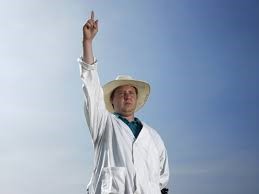
When the decision is made or relied on one person alone, human errors creeps into the game and even if there is no bad intensions of biasness, one side will always benefit from a wrong umpiring decision while the other side will be at the receiving end
Use of technology till recently was hardly used to maintain the character of the traditional game. English Cricket preferred to run the sport traditionally and we only saw the use of technology in the late 80s.
Over a century old game, was played in its traditional form and any change brought in to the rules or playing condition were not easily accepted.
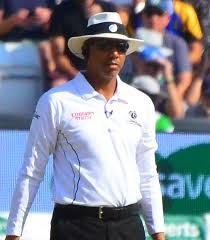 As the traditional style of cricket is preferred even today, poor umpiring decisions forced the International Cricket Council (ICC) to explore the use of technology.
As the traditional style of cricket is preferred even today, poor umpiring decisions forced the International Cricket Council (ICC) to explore the use of technology.
With time, technology which was adopted merely as an experiment, became more accepted and the need for more and more use of technology to assist umpire in decision making grew.
Technology in Cricket
Use of technology started with line decisions for run out and then for stumpings and this only helped improve quality of decision making.
Initially even with the use of technology the on-field umpire’s decision was never overturned but with the advancement of technology, allowed wrong on field decisions to be overturned.
Decision Review System (DRS) is one of the modern technology advancements brought into the game to review catches, Leg before the Wicket (LBW), No balls and run outs.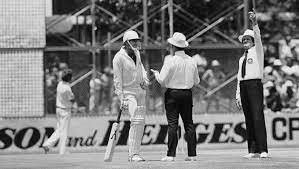
Not all technology used were accurate and have been rejected after its limited trails. For example, the famous episode of Dennis Lillie not allowed to use the aluminium bat comes to mind
Or the infamous use of the mongoose bat by Mathew Hayden was also banned by the ICC
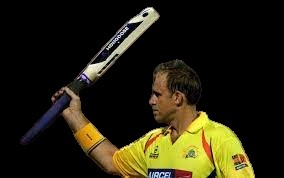 Decisions regards to technology have been biased towards the batsman with the modern bats helping to hit the ball far and wide while the balls lose its shine and swing in 10 to 15 overs of the game. Modern Technology also unfortunately makes cricket a batsman’s game.
Decisions regards to technology have been biased towards the batsman with the modern bats helping to hit the ball far and wide while the balls lose its shine and swing in 10 to 15 overs of the game. Modern Technology also unfortunately makes cricket a batsman’s game.
Here’s a look into The Technology used in Modern Cricket
Use of Third Umpires
A third umpire was brought into the game. The Third Umpire, is a qualified umpire and acts as an extra pair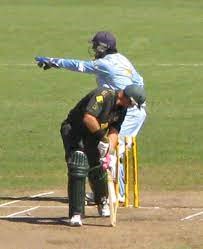 of eyes for the on-field umpire to help them make an accurate decision. The Third Umpire uses Television replays for disputed catches, boundary decisions and run outs etc to base his decisions. This has definitely reduced the errors but has never been a 100% method as the Third umpire is also prone to human error.
of eyes for the on-field umpire to help them make an accurate decision. The Third Umpire uses Television replays for disputed catches, boundary decisions and run outs etc to base his decisions. This has definitely reduced the errors but has never been a 100% method as the Third umpire is also prone to human error.
The third umpire helps in any decision which the on-field umpire requires. When technology is found conclusive to make a decision, then the third umpire relays his message to the on-field umpire which may to stand with the on-field decision or to overturn the on-field decision.
Decision Review System (DRS)
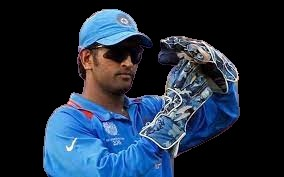 Initially the use of the third umpire assistance was at the discretion of the on-field umpire alone, but with the, like in other sports, teams can now demand for third umpire assistance with a limited failed chance. Currently test cricket allows 3 failed appeals and limited over cricket allows 2 failed appeals. If the DRS review taken by the team is successful there is no deduction in the number of appeals.
Initially the use of the third umpire assistance was at the discretion of the on-field umpire alone, but with the, like in other sports, teams can now demand for third umpire assistance with a limited failed chance. Currently test cricket allows 3 failed appeals and limited over cricket allows 2 failed appeals. If the DRS review taken by the team is successful there is no deduction in the number of appeals.
When Decision Review System (DRS) is asked for decisions are still not 100% accurate as technology is 100% fool proof and the third umpire is also prone to human error. Time is wasted and this sometimes slows down the pace and momentum of the game.
Use of Television Technology
Snickometer
British computer scientist Allan Plaskett Invented the Snickometer and the technology was first introduced by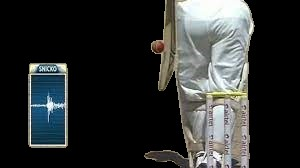 UK’s Channel 4 in 1999. It was to determine if the ball brushed the edge of a bat for a potential caught behind or a Leg before to be denied.
UK’s Channel 4 in 1999. It was to determine if the ball brushed the edge of a bat for a potential caught behind or a Leg before to be denied.
The newer upgraded version of the Snicko as commonly known is the Real Time Snickometer (RTS) which makes decision making faster.
Hawk Eye
HawkEye was first introduced in a test match between England and Pakistan on Lord’s Cricket Ground, broadcasted by Channel 4 on 21st May 2001. It is used to track the trajectory of balls in flight.
The Hawk Eye technology is used in Cricket, Tennis. Soccer and many other sports and have become a must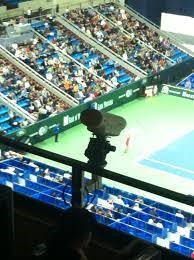 have in an international match.
have in an international match.
It was developed by Dr Paul Hawkins from the UK and implement in 2001 to make television broadcast more interactive
6 to 7 cameras are used to determine the ball trajectory and the decision made is often a topic of debate and the team at the wrong end of the decision finds it difficult to accept the trajectory. But over the years, the teams have started accepting and going ahead with the result the Hawkeye shows
Hawkeye helps umpire to determine where the ball pitched, the impact position and the projected path the ball based on the pace , swing or turn of the ball.
Hot Spot
While the Snickometer showed murmurs and sometimes not very conclusive that the ball actually touched the bat and the murmur could be the bat hitting pad or some part of the body. Hot spot technology, an infra- red imaging system was brought in to reduce this error. It used 2 cameras on either side of the ground and would create a bright spot where the ball comes in contact
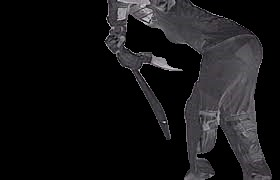 The technology uses two cameras positioned on the either end of the ground and measures heat friction generated by a collision, such as ball on pad, ball on bat, ball on glove or anywhere else. The technology uses a subtraction technique of monochrome negative frames into a computer for finding out the ball contact precisely.
The technology uses two cameras positioned on the either end of the ground and measures heat friction generated by a collision, such as ball on pad, ball on bat, ball on glove or anywhere else. The technology uses a subtraction technique of monochrome negative frames into a computer for finding out the ball contact precisely.
SpiderCam
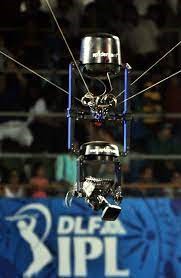
The newest and probably the most breathtaking camera shots of the batsman in real time helps the spectators to view the game at an amazingly close range.
With the help of cables, cameras can hover around the stadium vertically and horizontally over the play area which makes great television viewing
It has happened in the past when batsmen has hit the cables of the Spidercam which immediately makes it a dead ball and the ball has to be re-bowled
The SpiderCam was first used in the Indian Cricket League followed by the semi finals of 2010 IPL in Champions League Twenty20 in South Africa.
PitchVision
The pitch Vision helps to measure and record a bowler’s pace , line and length . it also helps to know the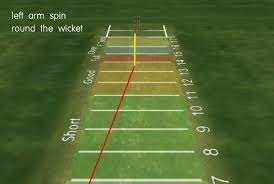 deviation, bounce and foot position of the bowler’s landing position at the crease.
deviation, bounce and foot position of the bowler’s landing position at the crease.
It makes a historical updates of the batsman’s batting innings to give vital feedback on areas of strength and weakness of the batsman and presents a graphical representation for the audience to see.
Ball Spin RPM/ Rev Counter
 This technology is used to determine the revolution on the ball to determine the rotation speed to measure the bowler’s effort on the ball on delivery and to determine how much the ball would turn. This is used more for spinners. The mystery attached to the art of spin bowling is lessened by this technology as expert can decipher the skill of the bowler sitting at a studio
This technology is used to determine the revolution on the ball to determine the rotation speed to measure the bowler’s effort on the ball on delivery and to determine how much the ball would turn. This is used more for spinners. The mystery attached to the art of spin bowling is lessened by this technology as expert can decipher the skill of the bowler sitting at a studio
Stump Camera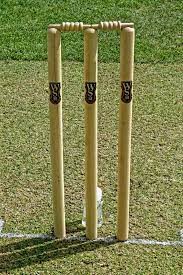
Camera has fitted making a hollow middle stump and the viewers are given a real time view of the ball being delivered as seen by the batsman.
The cameras generate breath-taking replay shots when the batsman gets bowled
Speed Gun
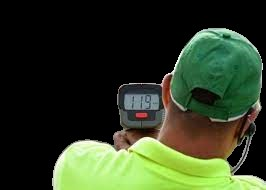 Speed gun are cameras placed at the pole next to the sight screen and measures the ball speed across the entire length of the pitch
Speed gun are cameras placed at the pole next to the sight screen and measures the ball speed across the entire length of the pitch
How fast a pace bowler or a spinner bowls can be known to determine the effectiveness according to pitch conditions
LED Bails and Stumps
Probably one of the new technologies in the game allows bails to be lit up when they are dislodged from the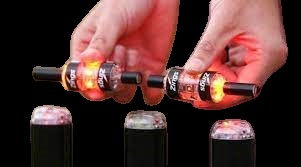 stumps which helps in some dramatic viewing.
stumps which helps in some dramatic viewing.
LED bails are an expensive solution and are not used in all tournaments
Technology has definitely helped the game to improve but the biggest beneficiaries are the umpires who can now rely on technology help to make sound decisions.
Front-foot Technology –
One of the latest changes in modern cricket is the call made by third umpire on front foot no ball instead of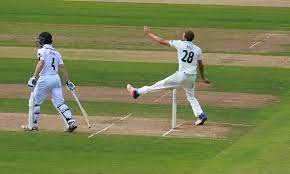 on-field umpires. This has helped the on-field umpire to focus on the game after the ball is delivered and not worry if the bowler is delivering a no ball or not. This has definitely helped in reducing umpiring mistakes
on-field umpires. This has helped the on-field umpire to focus on the game after the ball is delivered and not worry if the bowler is delivering a no ball or not. This has definitely helped in reducing umpiring mistakes
Bowling Machine
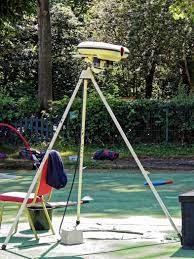 A Practise tool to help the batsman while practising batting is a common tool used by most players across and helps develop muscle memory to Balls hitting at a certain length line and speed. It takes away bowler fatigue and can improve batting flaws. The bowling machine is at a similar height of a bowler at normal delivery stride and gives a real time feel
A Practise tool to help the batsman while practising batting is a common tool used by most players across and helps develop muscle memory to Balls hitting at a certain length line and speed. It takes away bowler fatigue and can improve batting flaws. The bowling machine is at a similar height of a bowler at normal delivery stride and gives a real time feel
…..And Some more …..
Helmet cameras to give the spectators a real time feel of the bowlers delivery to the batsman , Technology measuring how far the ball has been hit are some of the regular features now in all games
Future Technologies
Better Quality Cricket balls
Currently Cricket ball is not standardised and some cricketing nations use the SG balls and some use the Kookaboora balls. This is due to the change in weather conditions and the need to retain the ball in its best possible condition for a longer period of time
Machine to track bowlers action
This technology will be likely used in the near future to know the extent of bending of the arm at the time of delivery in real time. Onfield umpires will be able to take a call on the legality of the bowling action
Better Sports gears
Many technological improvements have been tried in football like measuring the players fitness and vitals while playing and to know if there is a drop in the player intensity due to fatigue and tiredness. Cricketers have already adopted few of these technologies to improve overall fitness.
Indoor Stadium
Cricket being an outdoor sport gets interrupted due to weather conditions especially rain, Collapsible roofs used in football stadium to cover the roofs in case of rain may well be a solution in cricket stadiums too and soon we may see this being implemented
Conclusion
Cricket is evolving and so will technology to make watching the sport be more interesting. The advanced technology used in cricket has significantly impacted the game.
Bad Umpiring decisions have changed the complexion of games in the late 80s and early 90s.


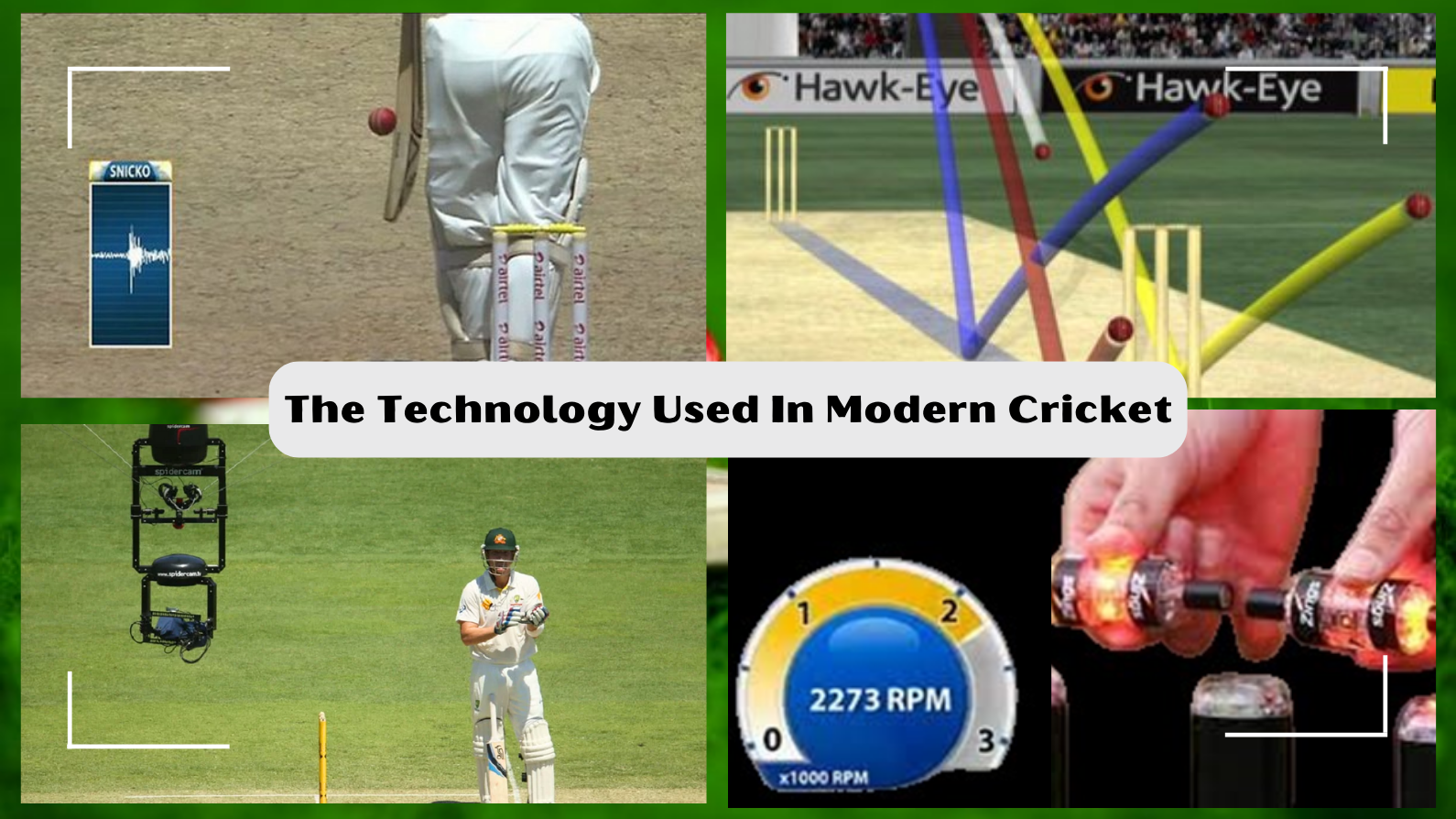
Leave A Comment